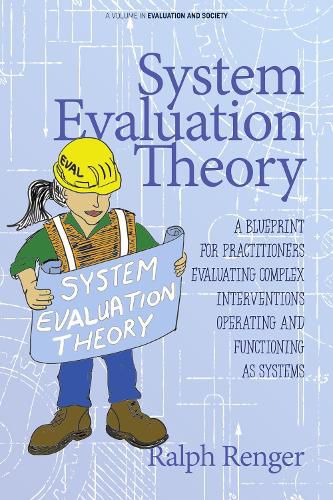Readings Newsletter
Become a Readings Member to make your shopping experience even easier.
Sign in or sign up for free!
You’re not far away from qualifying for FREE standard shipping within Australia
You’ve qualified for FREE standard shipping within Australia
The cart is loading…






This title is printed to order. This book may have been self-published. If so, we cannot guarantee the quality of the content. In the main most books will have gone through the editing process however some may not. We therefore suggest that you be aware of this before ordering this book. If in doubt check either the author or publisher’s details as we are unable to accept any returns unless they are faulty. Please contact us if you have any questions.
Too often evaluation findings end up on the shelf! Why? Many interventions have several moving parts working together to achieve something each part cannot do independently. Unfortunately, many of the available evaluation approaches oversimplify this reality. A major reason for this is that evaluators do not have a blueprint to plan, and the associated methods to execute, an evaluation fit for this purpose. As such, they revert to using methods with which they are familiar, but are not suitable, for evaluating complex interventions. Consequently, the evaluation findings do not make sense to decisionmakers, so they are ignored. This book provides evaluators of all skill levels with a simple 3-step framework, System Evaluation Theory, that will lead to more actionable recommendations because the methods better capture the reality in which interventions operate; that is as a system.
The book first reviews the limitations of program evaluation approaches that pointed to a need for a different way of thinking, one grounded in systems. After defining a system, the book explains how SET is intentionally aligned to evaluate a system's two essential properties: interdependence and emergence. Individual chapters are dedicated to explaining how to execute each SET step. Throughout, the author draws on real-world examples and those from his own evaluations to help bridge the theory-practice divide. The reader is then shown how to use SET to develop actionable recommendations.
$9.00 standard shipping within Australia
FREE standard shipping within Australia for orders over $100.00
Express & International shipping calculated at checkout
This title is printed to order. This book may have been self-published. If so, we cannot guarantee the quality of the content. In the main most books will have gone through the editing process however some may not. We therefore suggest that you be aware of this before ordering this book. If in doubt check either the author or publisher’s details as we are unable to accept any returns unless they are faulty. Please contact us if you have any questions.
Too often evaluation findings end up on the shelf! Why? Many interventions have several moving parts working together to achieve something each part cannot do independently. Unfortunately, many of the available evaluation approaches oversimplify this reality. A major reason for this is that evaluators do not have a blueprint to plan, and the associated methods to execute, an evaluation fit for this purpose. As such, they revert to using methods with which they are familiar, but are not suitable, for evaluating complex interventions. Consequently, the evaluation findings do not make sense to decisionmakers, so they are ignored. This book provides evaluators of all skill levels with a simple 3-step framework, System Evaluation Theory, that will lead to more actionable recommendations because the methods better capture the reality in which interventions operate; that is as a system.
The book first reviews the limitations of program evaluation approaches that pointed to a need for a different way of thinking, one grounded in systems. After defining a system, the book explains how SET is intentionally aligned to evaluate a system's two essential properties: interdependence and emergence. Individual chapters are dedicated to explaining how to execute each SET step. Throughout, the author draws on real-world examples and those from his own evaluations to help bridge the theory-practice divide. The reader is then shown how to use SET to develop actionable recommendations.